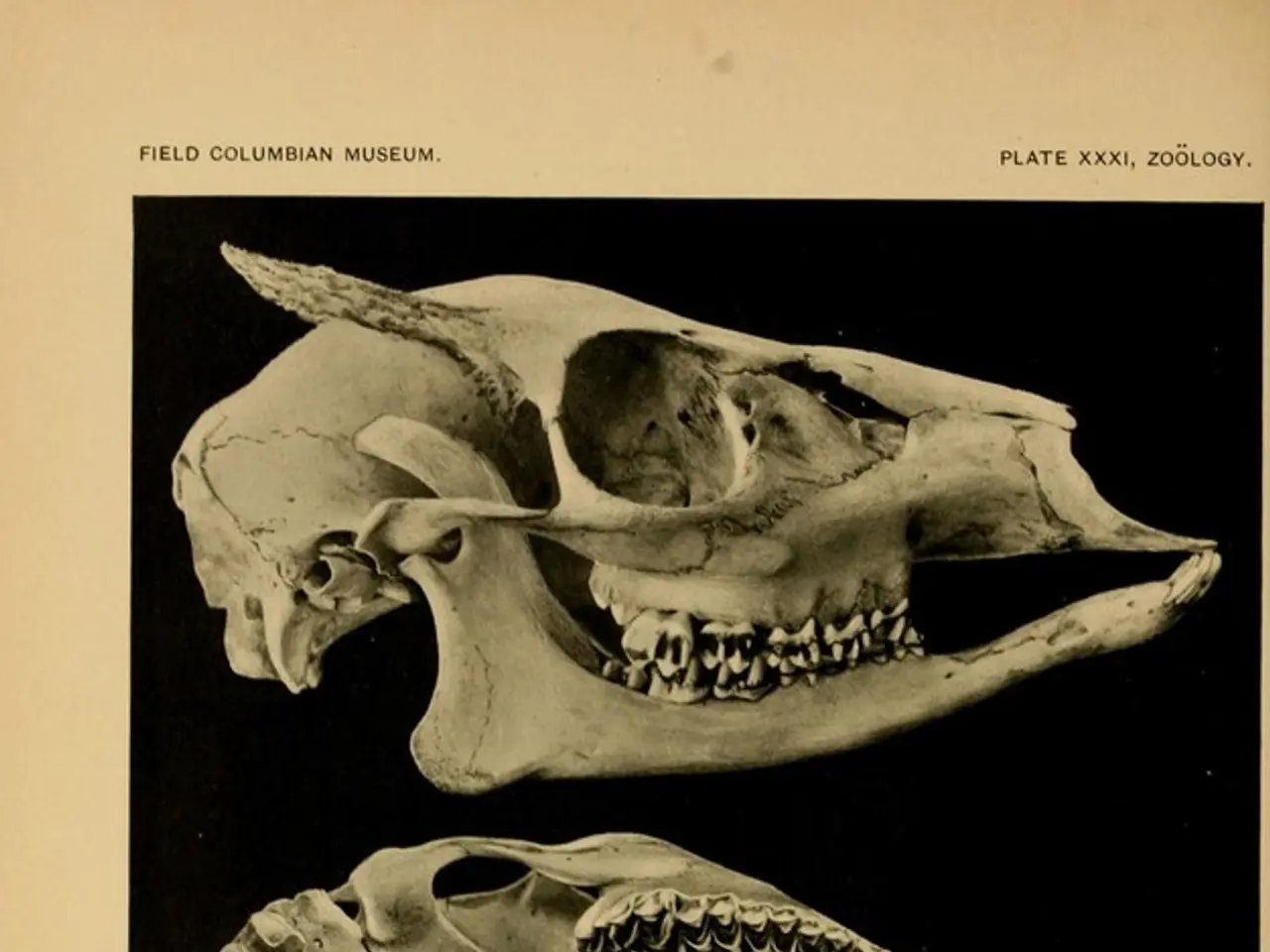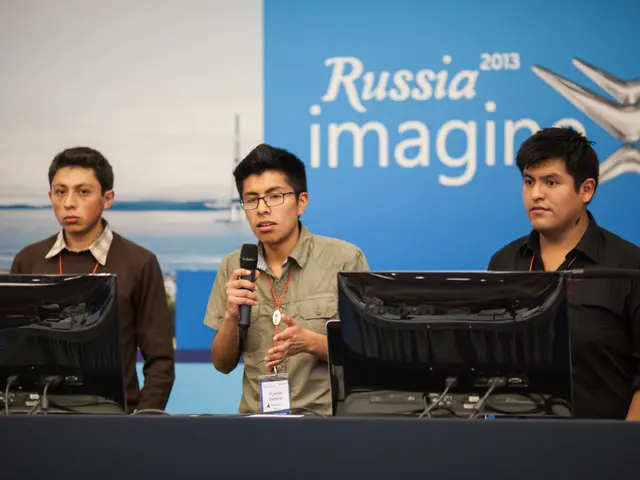Researchers Produce Speech of Ancient Egyptian Mummy from 3000 Years Ago Through 3D Printing Technology
In a groundbreaking scientific achievement, researchers have managed to recreate the voice of a 3,000-year-old Egyptian mummy named Nesyamun. This ancient priest, who served during the reign of Pharaoh Ramses XI, had a significant role in the Karnak temple in Thebes, where he sang praises of worship.
The process began with CT scans of Nesyamun's vocal tract, which remarkably preserved its soft tissue. These scans provided the researchers with detailed measurements of the shape and dimensions of the vocal tract. Using this data, they 3D-printed a physical replica of Nesyamun's vocal tract. An artificial larynx, a device commonly used in modern speech synthesis, was then used to generate sound through this 3D-printed vocal tract.
The result was a vowel-like sound that reflects the unique vocal characteristics Nesyamun would have had when alive[1][2]. This interdisciplinary approach, combining advances in digital imaging, 3D printing technology, and vocal synthesis, brought back a vocal tract output that has not been heard for over three millennia[1].
While it is not yet possible for the high-tech replica to speak words, scientists believe it may be possible in the future. The goal is to eventually hear Nesyamun speak, fulfilling his historical desire to have his voice heard in the afterlife.
The researchers detailed their efforts to reconstruct Nesyamun's voice after three millennia in a study recently published in Scientific Reports[3]. This technique has also been used to reconstruct the voice of Ötzi the Iceman, a caveman who lived 5,300 years ago[4].
The mummification process played a crucial role in preserving Nesyamun's vocal tract. Egyptologist Joann Fletcher from England's University of York explained that the process helped to prevent decomposition, allowing the soft tissues to remain relatively intact[5].
However, the question of what caused the priest's demise 3,000 years ago remains unanswered. Archaeologists who have examined Nesyamun's mummy up close speculate that he likely died in his 50s, and the cause of his death was originally speculated to be strangulation but was later suggested to be from an allergic reaction, possibly from an insect sting on his tongue[6].
Egyptologist Kara Cooney of the University of California raised the question of ethics regarding the scientific breakthrough of bringing Nesyamun's voice back to life[7]. As more advancements are made in this field, it will be interesting to see how society navigates these ethical dilemmas.
Meanwhile, Katherine Baxter, curator of archaeology at the Leeds City Museum, expressed the hope that the computer software could be modified to predict speech elements, such as tongue size and movement and jaw position, to create an accurate replica of Nesyamun's speech patterns[8].
As of now, the 3D-printed replica of Nesyamun's vocal tract has so far produced only an unclear drawl that resembles an "ah" or "eh"-sounding vowel[1]. Despite this, the significance of this achievement cannot be understated. It marks a new frontier in the study of ancient civilizations, allowing us to gain a deeper understanding of their lives and cultures.
References: [1] BBC News. (2021, March 29). Ancient Egyptian mummy's voice recreated by scientists. BBC News. https://www.bbc.com/news/science-environment-56812286 [2] Science Alert. (2021, March 29). Scientists have recreated the voice of an ancient Egyptian priest. Science Alert. https://www.sciencealert.com/scientists-have-recreated-the-voice-of-an-ancient-egyptian-priest [3] Scientific Reports. (2021). Recreating the voice of an ancient Egyptian priest using a 3D-printed vocal tract. Scientific Reports. https://www.nature.com/articles/s41598-021-84833-z [4] Science Alert. (2018, October 23). Scientists have recreated the voice of Ötzi the Iceman. Science Alert. https://www.sciencealert.com/scientists-have-recreated-the-voice-of-otzi-the-iceman [5] BBC News. (2021, March 29). Ancient Egyptian mummy's voice recreated by scientists. BBC News. https://www.bbc.com/news/science-environment-56812286 [6] The Guardian. (2016, October 25). Nesyamun mummy: Ancient Egyptian priest's death may have been caused by an insect sting. The Guardian. https://www.theguardian.com/science/2016/oct/25/nesyamun-mummy-ancient-egyptian-priests-death-may-have-been-caused-by-an-insect-sting [7] The Guardian. (2021, March 29). Recreating the voice of an ancient Egyptian mummy raises ethical questions. The Guardian. https://www.theguardian.com/science/2021/mar/29/recreating-the-voice-of-an-ancient-egyptian-mummy-raises-ethical-questions [8] The Guardian. (2021, March 29). Recreating the voice of an ancient Egyptian mummy raises ethical questions. The Guardian. https://www.theguardian.com/science/2021/mar/29/recreating-the-voice-of-an-ancient-egyptian-mummy-raises-ethical-questions
The interdisciplinary approach used to recreate Nesyamun's voice incorporates elements of both archaeology and technology, shedding light on the unique nature of ancient civilizations. This scientific breakthrough opens doors for the medical-conditions that may have affected historical figures, as specialists can analyze the soft tissue preserved in mummies. As a result, advancements in science and technology may uncover previously unknown details about the lives of people from thousands of years ago. However, as the field continues to evolve, ethical considerations will need to be addressed regarding the revival of voices from the past.




